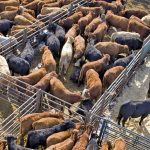Bountiful monsoons have swept through India, dousing a deadly heat wave and washing away worries for that country’s farmers.
That isn’t good for world grain and oilseed prices, which were strengthened by last year’s drought in India.
“It will mean they won’t need as much oil on the world market,” said Statcom Ltd. canola analyst Nolita Clyde.
“That will mean a little more soy oil and palm oil on the market.”
Indian farmers rely on the June-July monsoon to provide moisture for their spring crops, which are now growing, and for winter crops that will be planted in October and November.
Read Also

VIDEO: Catch up with the Western Producer Markets Desk
The Western Producer Markets Desk provides daily updates on agricultural markets, with recent video commentary including looks into canola, wheat, cattle and feed grains.
India’s main wheat and rapeseed crops are winter crops, but soybeans are grown in the summer and will see the most immediate improvement.
Clyde said India will still be a “huge importer” of vegetable oils, but will have more domestic supplies to consume.
Canadian Wheat Board weather analyst Guy Ash said the summer monsoon can supply up to 85 percent of the moisture the country’s fall-seeded crops need, so the arrival of this year’s monsoon is great news for Indians.
“It’s produced substantial moisture through most areas and (is) replenishing dry soil moisture reserves, irrigation supplies and domestic water sources,” said Ash.

















